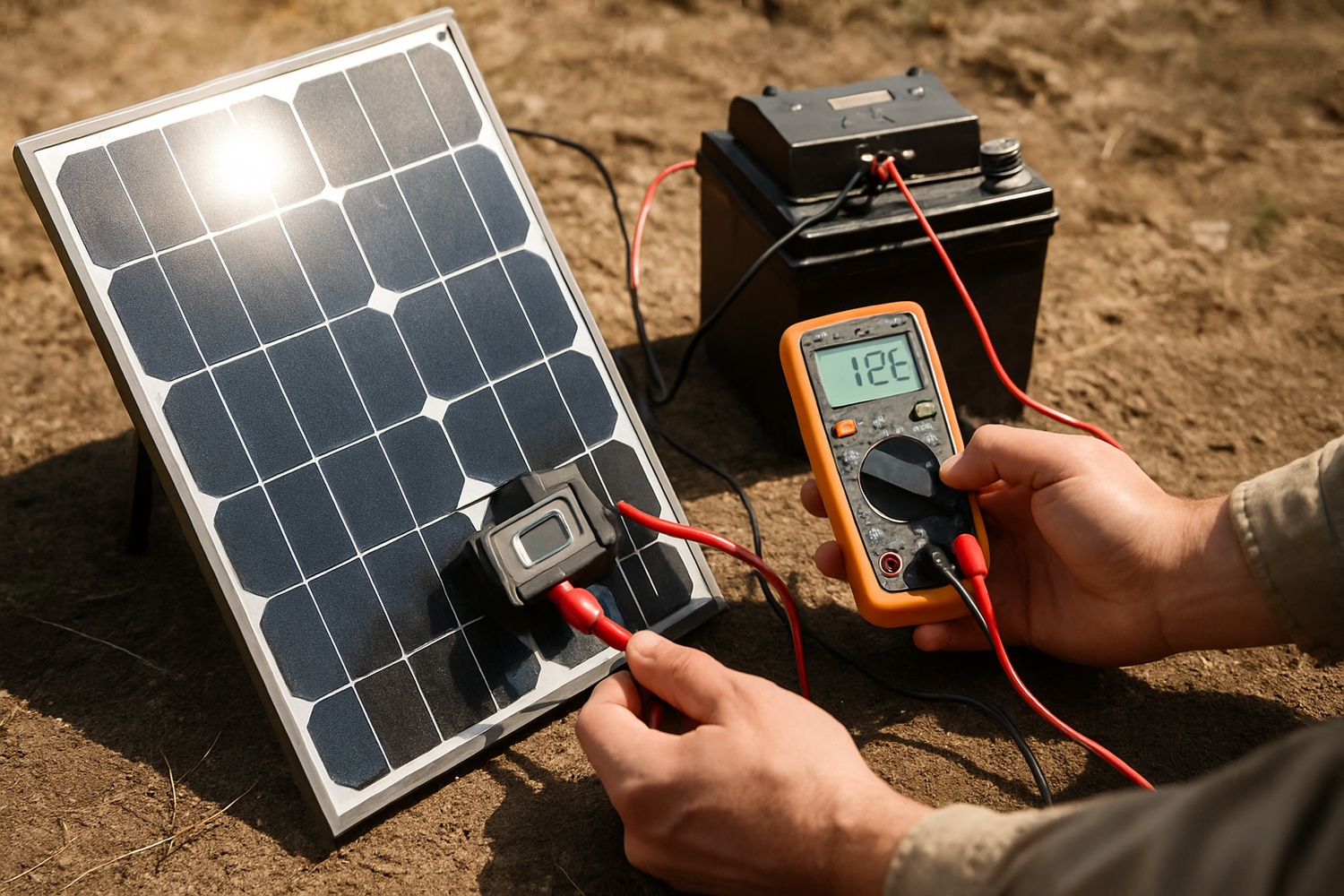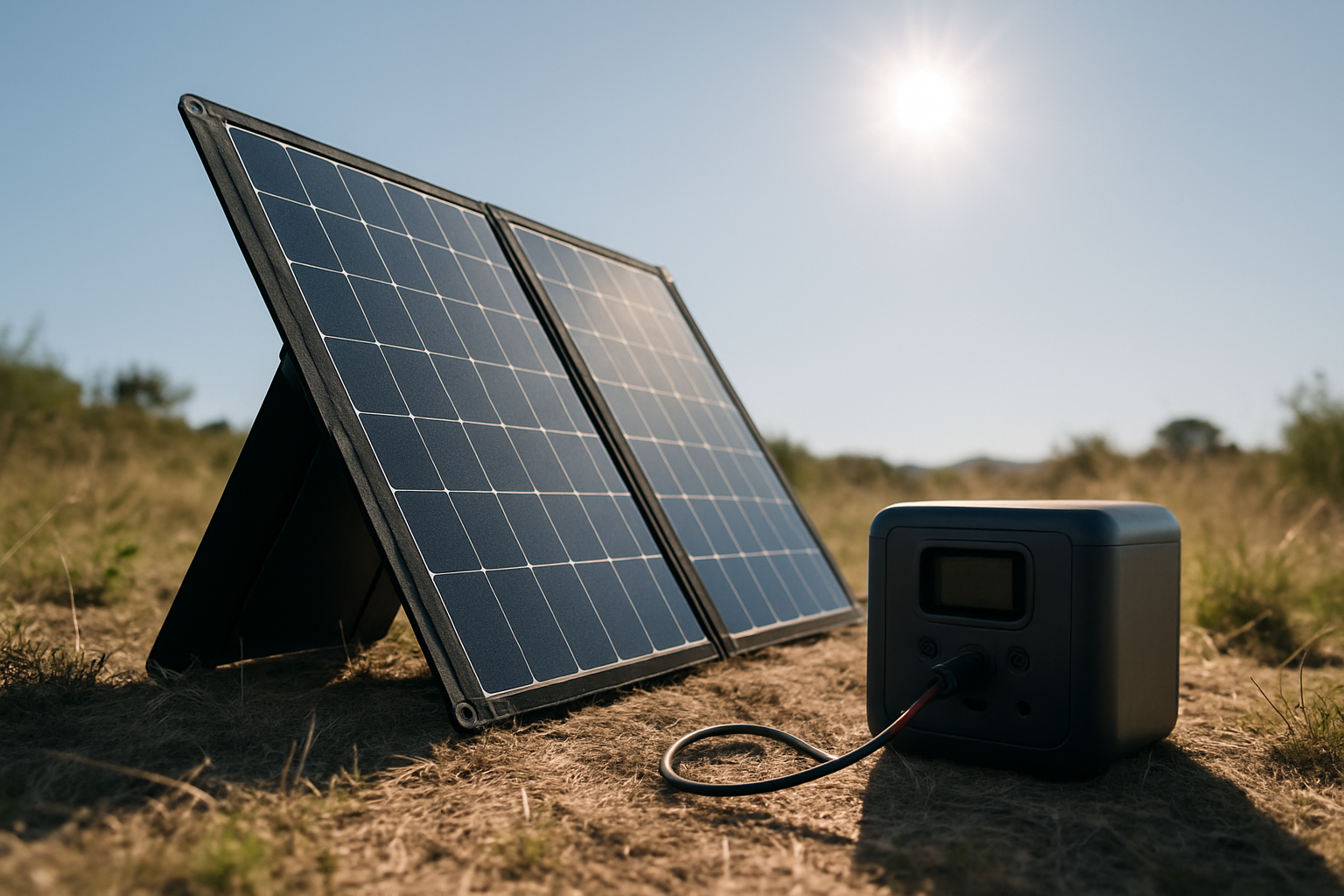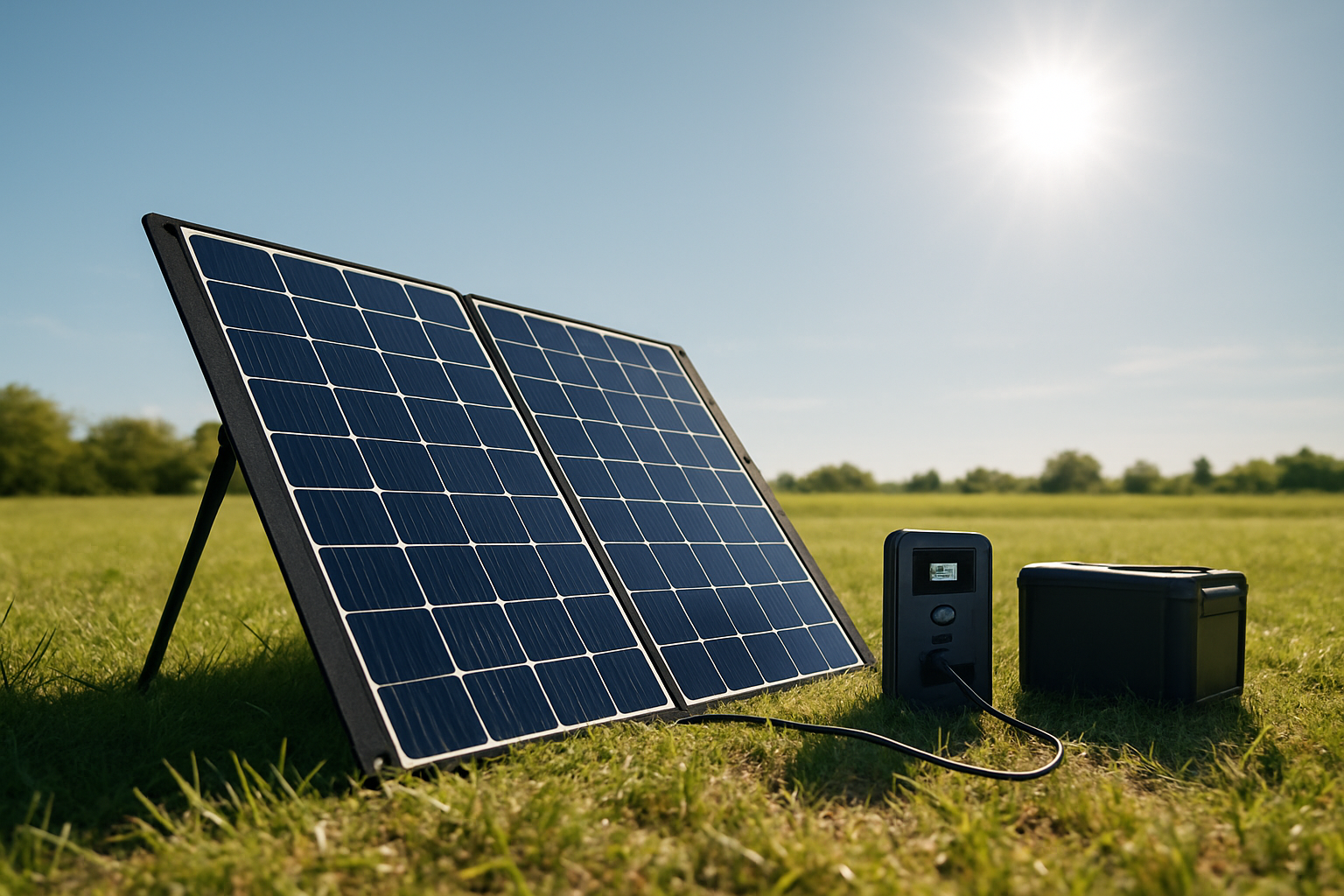Portable solar kits offer freedom and power for off-grid adventures, emergency preparedness, and remote work. Yet, experiencing slow solar charging can be frustrating, limiting your energy independence. This guide will help you pinpoint the reasons behind sluggish charging and equip you with practical solutions to restore your system's efficiency.

Understanding Your Portable Solar System's Core
Key Components and Their Roles
A portable solar kit typically consists of several interconnected parts, each playing a vital role in converting sunlight into usable electricity:
- Solar Panels: These capture sunlight and convert it into direct current (DC) electricity. Their efficiency dictates how much power your system can generate.
- Charge Controller: This device regulates the voltage and current from the solar panels to the battery, preventing overcharging and optimizing the charging process. Two common types are Pulse Width Modulation (PWM) and Maximum Power Point Tracking (MPPT) controllers.
- Battery: Your battery stores the electricity generated by the solar panels. Lithium Iron Phosphate (LiFePO4) batteries are a popular choice due to their high performance, safety, and reliability, offering a longer cycle life and better deep discharge capabilities compared to other battery chemistries.
- Cables and Connectors: These facilitate the flow of electricity throughout the system. Their quality and sizing are crucial for minimizing energy loss.
Ideal Versus Actual Performance
Manufacturers provide a rated power output for solar panels, often under Standard Test Conditions (STC). However, real-world performance frequently differs. Factors like sunlight intensity, panel orientation, and temperature significantly influence the actual power delivered. For instance, a 5W solar panel might only deliver 1-2W in typical conditions.
Common Reasons for Slow Charging
Many factors can contribute to your portable solar kit charging slowly. Identifying the specific cause is the first step toward a solution.
Environmental Factors
- Insufficient Sunlight: This is the most frequent culprit. Shading from trees, buildings, or even self-shading from other panels can drastically reduce power output. Even partial shading can significantly impact performance, with some experts suggesting losses of up to 40% of potential solar generation. Research indicates that shading just one cell in a module can cause the output power of the entire module to fall to half, or even zero if completely shaded.
- Panel Orientation and Tilt: For optimal energy capture, your solar panels need direct, unobstructed sunlight. The angle and direction of your panels should be adjusted to face the sun throughout the day and seasonally.
- Temperature: Counterintuitively, high temperatures reduce solar panel efficiency. Solar panels perform best around 25°C (77°F). For every degree Celsius above this, a solar panel's efficiency can decline by approximately 0.3% to 0.5%. This means on a hot day, a panel rated for 320W might only generate around 308.5W at 35°C, representing a 3.6% loss.
Equipment-Related Issues
- Dirty or Damaged Panels: Accumulation of dust, dirt, pollen, bird droppings, or even leaves on the panel surface can block sunlight, reducing energy output. A dirty surface can cause up to a 25% drop in energy production, and in extreme cases, a decline higher than 20%. Physical damage like microcracks or delamination also impairs performance.
- Undersized or Faulty Cables and Connectors: Cables that are too thin (higher American Wire Gauge or AWG number) for the current they carry will have higher resistance, leading to significant voltage drop and power loss. This energy loss manifests as heat and can even pose fire risks if wires are undersized.
- Charge Controller Malfunction: A faulty charge controller might not be effectively regulating power flow. MPPT controllers, which are more advanced, can increase system efficiency by up to 30% by optimizing the power point, especially in varying light conditions. PWM controllers are simpler and typically 70-80% efficient, while MPPT controllers achieve 90-95% efficiency.
- Battery Health and State of Charge: An aging or damaged battery may not accept a charge efficiently. LiFePO4 batteries, for instance, have specific charging characteristics and a Battery Management System (BMS) to protect against over-voltage and over-current.
Step-by-Step Diagnosis Techniques
Visual Inspection and Basic Checks
Start with simple observations:
- Clean Panels: Gently clean your solar panels with a soft cloth and water. Remove any debris.
- Check Connections: Inspect all cables and connectors for loose connections, corrosion, or physical damage. Ensure they are securely fastened.
- Assess Shading: Observe your panels throughout the day to identify any persistent shading from surrounding objects.
- Breaker Status: Verify that any circuit breakers in your system are in the 'on' position.
Using Multimeters for Deeper Insights
A multimeter is a valuable tool for diagnosing electrical issues. You can measure voltage, current, and resistance.
To test your solar panel output:
- Disconnect the panel from the rest of the system.
- Measure Open-Circuit Voltage (Voc): Set your multimeter to DC voltage. Connect the positive lead to the panel's positive terminal and the negative lead to the negative terminal. Place the panel in direct sunlight. The reading should be within 80-105% of the Voc value listed on your panel's specifications. For a 12V solar panel, this is typically around 21-25V.
- Measure Short-Circuit Current (Isc): For this, you typically need a clamp meter. Connect the panel's positive and negative terminals together (short-circuiting it briefly) and measure the current using the clamp meter set to DC Amps. This reading should be within 80-105% of the Isc value on your panel's specifications. For a 100W solar panel, this is usually 4-5A.
- Measure Voltage at Charge Controller: Check the voltage at the input terminals of your charge controller from the panels, and then at the output terminals going to the battery. Significant differences could indicate a controller issue or cable loss.
- Measure Battery Voltage: Check your battery's voltage directly. A low battery voltage might cause the charge controller to limit current to prevent damage.
Table: Typical Multimeter Readings for a Healthy 100W/12V Portable Solar Panel (under full sun)
| Measurement | Expected Range | Indication of Issue if Low |
|---|---|---|
| Open-Circuit Voltage (Voc) | 21-25V DC | Panel damage, heavy shading, poor sunlight |
| Short-Circuit Current (Isc) | 4-5A DC | Panel damage, heavy shading, dirty panel, poor sunlight |
| Voltage at Controller Input | ~20-24V DC | Cable loss from panel to controller, panel issue |
| Voltage at Controller Output | ~13.8-14.6V DC (for 12V LiFePO4) | Controller malfunction, battery issue |
Interpreting Readings and Identifying Bottlenecks
- If Voc and Isc are significantly below specifications, the problem likely lies with the panel itself or severe environmental conditions.
- A large voltage drop between the panel and the charge controller suggests undersized or damaged cables.
- If the charge controller input is good but the output to the battery is low, the controller may be faulty or improperly configured for your battery type.
- A healthy battery should accept charge. If battery voltage remains low despite good input from the controller, the battery might be at fault (e.g., internal resistance, age).
Optimizing Your Portable Solar Setup for Efficiency
Once you have diagnosed the issue, you can implement strategies to enhance your portable solar charging speed.
Smart Placement and Angle Adjustments
- Maximize Sun Exposure: Always position your panels in full, direct sunlight, avoiding any shade. Relocating your panel throughout the day to follow the sun's path can significantly improve energy harvest.
- Optimal Tilt Angle: Adjust the panel's tilt angle to match your latitude for general use, or seasonally for better results (lower angle in summer, steeper in winter).
Component Upgrades and Maintenance
- Upgrade Charge Controller: If you are using a PWM controller, consider upgrading to an MPPT controller, especially for larger systems or in cooler conditions, as MPPTs can produce up to 20-25% more charging power.
- Proper Cable Sizing: Ensure your cables are adequately sized for your system's current and cable length to minimize voltage drop and power loss. Thicker wires (lower AWG numbers) have less resistance.
- Battery Technology: LiFePO4 batteries offer faster charging capabilities compared to lead-acid batteries. For example, LiFePO4 batteries can accept charge up to 0.7C, compared to 0.2C for lead-acid, meaning they can charge in about 1.4 hours versus 5 hours for lead-acid. Hybrid systems combining solar PV with battery storage are increasingly deployed to enhance grid flexibility and reduce curtailment. Renewable Power Generation Costs in 2024 highlights that batteries in these systems allow electricity to be shifted to periods of higher demand or market value.
- Regular Cleaning: Keep your panels free of dirt and debris. This simple maintenance step can prevent significant power loss.
Maximizing Your Solar Potential
Diagnosing slow solar charging in portable kits involves a systematic approach, from checking environmental factors to inspecting individual components. By understanding the basics of your system, recognizing common issues, and applying practical diagnostic techniques, you can effectively troubleshoot and optimize your portable solar setup. Proactive maintenance and informed choices about your equipment contribute to a reliable and efficient energy source, empowering you with true energy independence.
Frequently Asked Questions
Why is my solar charging slower on cloudy days?
Solar panels rely on direct sunlight to generate electricity. On cloudy days, the intensity of sunlight reaching the panels is significantly reduced, leading to a proportional decrease in power output and slower charging times.
Can dirty panels really affect charging speed?
Yes, absolutely. Dirt, dust, pollen, and other debris on your solar panels can block sunlight from reaching the photovoltaic cells. This obstruction reduces the amount of energy converted into electricity, leading to slower charging. Studies suggest that dirty panels can reduce energy production by 5-30%.
What's the difference between MPPT and PWM charge controllers?
MPPT (Maximum Power Point Tracking) controllers are more advanced and efficient, especially in varying light conditions or when the panel voltage is higher than the battery voltage. They actively track the maximum power point of the solar array to extract the most energy, with efficiencies typically ranging from 90-95%. PWM (Pulse Width Modulation) controllers are simpler and less expensive, operating by rapidly switching the power flow. They are generally 70-80% efficient and are better suited for smaller systems or when the panel and battery voltages are similar.
How often should I check my portable solar kit?
Regular visual inspections are recommended before each use, especially after storage or travel. A more thorough check, including cleaning and potentially multimeter testing, is beneficial every few months or if you notice a significant drop in charging performance.
Does battery type impact charging speed?
Yes, battery chemistry plays a significant role. LiFePO4 batteries, for example, can accept a charge much faster than traditional lead-acid batteries due to their different internal chemistry and charging profiles. They are known for their ability to handle higher charge rates, leading to quicker replenishment of stored energy.





Leave a comment
All comments are moderated before being published.
This site is protected by hCaptcha and the hCaptcha Privacy Policy and Terms of Service apply.